#african wildcat (felis lybica)
Text

An African wildcat (Felis lybica) relaxes in a tree in Kgalagadi Transfrontier Park, South Africa
by jaffles
#african wildcat#wildcats#felines#felis lybica#felis#felidae#carnivora#mammalia#chordata#wildlife: africa#wildlife: south africa
1K notes
·
View notes
Text





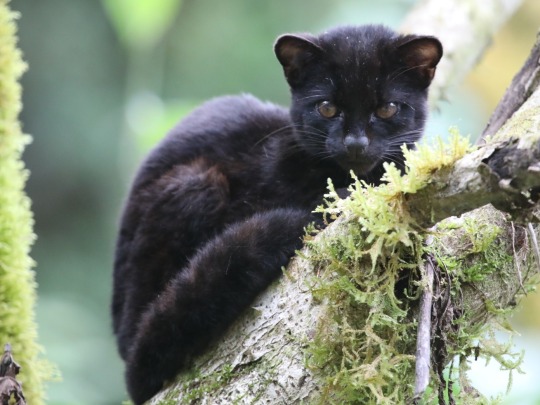




"panthers" ^_^ AKA melanism in wild cats, which occurs with high frequency in many feline species and is a common polymorph present in up to eleven
#☆#🐯#kodkod (leopardus guigna)#serval (leptailurus serval)#jaguar (panthera onca)#bobcat (lynx rufus)#jungle cat (felis chaus)#oncilla (leopardus tigrinus)#leopard (panthera pardus)#african wildcat (felis lybica)#geoffroy's cat (leopardus geoffroyi)#felid#colour mutation#melanistic#fav#juvenile#herbert's the lot of them. though black cats aren't melanistic they're just black LOL#also snuck in two kodkods bc they're so cuuuute and my favourites
169 notes
·
View notes
Text

Inktober day 17 - African wildcat, the ancestor of our domestic cat
This year I'm drawing wild cat species for Inktober. Which one would you like to see?
9 notes
·
View notes
Text
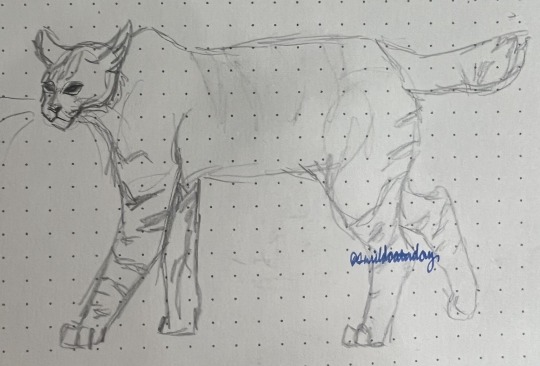
day forty-two: african wildcat
#1wildcataday#1 wild cat a day#one wild cat a day#art#cat#cats#wild cat#wild cats#african wildcat#Felis lybica#30/07/22#300722
10 notes
·
View notes
Text
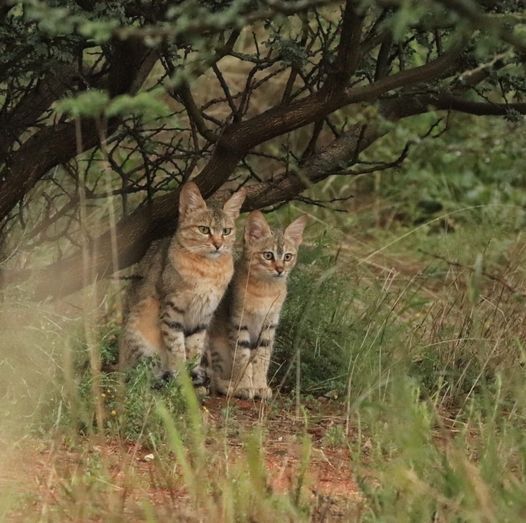
African Wildcats (Felis lybica), family Felidae, northern Africa
photograph by @Wendz222
112 notes
·
View notes
Text

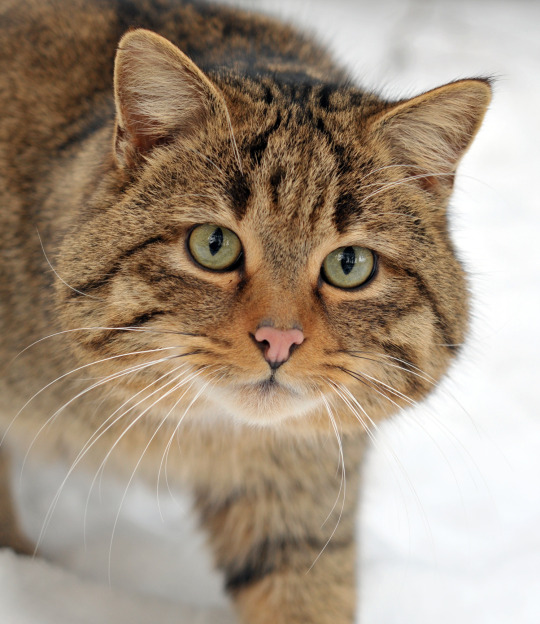
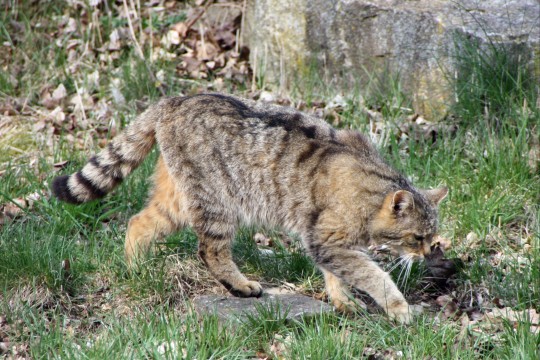
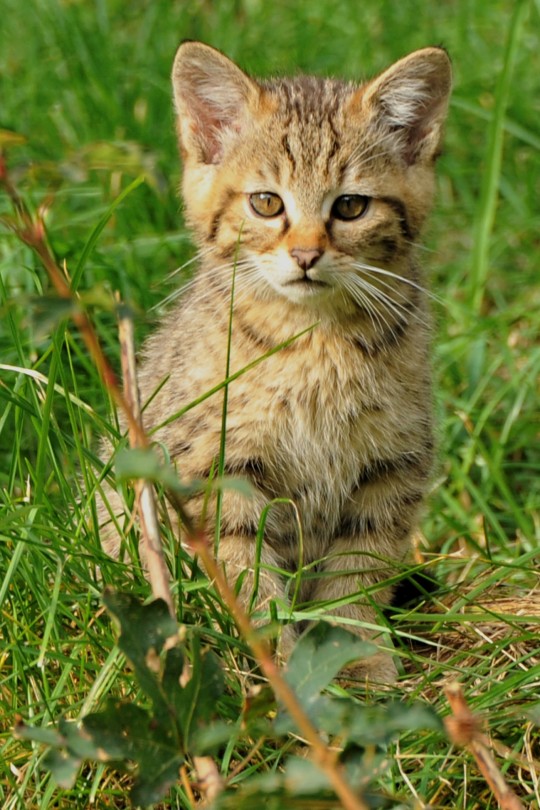
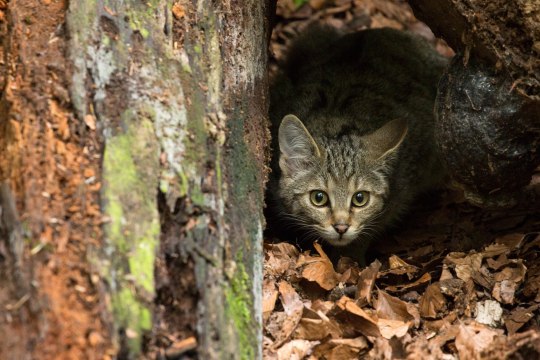
The European Wild Cat (Felis sylvestris sylvestris) is a small feline species currently re-populating vast areas of Germany. Its population is distributed over large areas of Southern and Central Europe from the far west to Ukraine and the Caucasus. It is absent in Northern Europe. After a dramatic drop of the population in the late 19th and early 20th century, which led to a complete disappearance in many regions and entire countries, the population and inhabited areas are constantly expanding again. Today's population is probably vastly underestimated due to the elusive lifestyle. New finds in an area are often made by chance on camera traps. The species has reappeared in Switzerland and Austria in the recent years and is reclaiming forests in Southern and Central Germany. The sharp decline in population was formerly attributed to intense hunting, but paleo-veterinarian investigations found evidence for an epidemic event as the likely cause.
In Germany, the cat prefers to live in large forests with little disturbances. This has led to the assessment that an undisturbed and unmanaged forest with the general absence of humans is required as a habitat for these cats. However, this assessment has come under debate as in Southern Europe, the European Wild Cat lives in more densely populated areas in close proximity to settlements. Camera traps in Germany have shown European Wild Cats living in relative proximity to human settlements. In addition, contrary to former belief, the existence of wide roads is not a major obstacle for the migration and the re-population of habitats. Nevertheless, Germany with its large forested areas provides ideal habitat for the European Wild Cat.
The European Wild Cat is similar in appearance to the common domestic cat, but its body is bigger, more massive, with taller legs and a head that accommodates a bigger brain. In contrast to the domestic cat, the European Wild Cat is regarded as being indomitable.
The status of The European Wild Cat and the domestic cat as two separate species (Felis silvestris and Felis catus, respectively – Felis catus originating fro Felis lybica, the African Wildcat) as defined by IUCN is debated among zoologists, as individuals of both taxonomical units can have viable and fertile offspring, which is usually results in assigning them as subspecies of the same species (Felis sylvestris sylvestris and Felis sylvestris lybica, respectively). Hybrids of Felis sylvestris and Felis catus also occur in nature, which leads among conservationists to the concern that pure-breed Felis sylvestris will die out in the future due to bastardization.
177 notes
·
View notes
Text
Pylogenetic wild cat tournament
Domestic cat lineage
Genus: Felis
Depth: 12 (11 wins away from championship)


Honestly I tried to read about the relationship of the Felis species, but all the hybridization makes the situation very hard to understand.
[Felis catus:] Domesticated mostly from a lineage of Felis lybica lybica from Mesopotamia. (A revised taxonomy of Felidae' (2017))
The domestic cat is arbitrarily considered either as a subspecies of F. silvestris (Felis silvestris catus) or as a distinct species (Felis catus). (European wildcat and domestic cat: Do they really differ? (2017))
European wildcats, Felis silvestris, can hybridize with domestic cats, Felis catus, which was domesticated from the African wildcat, Felis lybica, to produce fertile offspring. [...] Indeed, domestic cats are genetically closer to Felis lybica, a species that has evolved in a different ecological and evolutionary context than Felis silvestris. (A common statement on anthropogenic hybridization of the European wildcat (Felis silvestris) (2023))
I kinda give it up. Have some pictures at least:
Chinese mountain cat
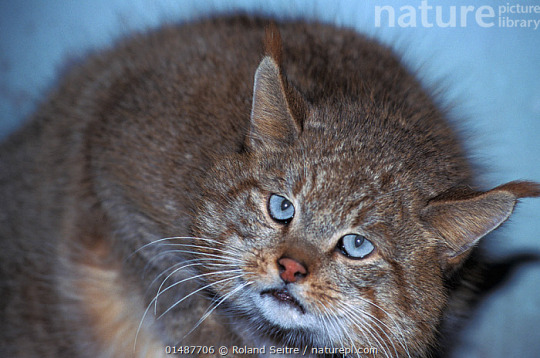

I love the blue eyes, it's a very interesting and unique trait of the species.
African wildcat
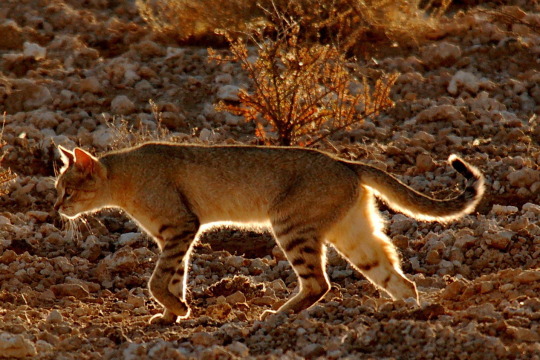
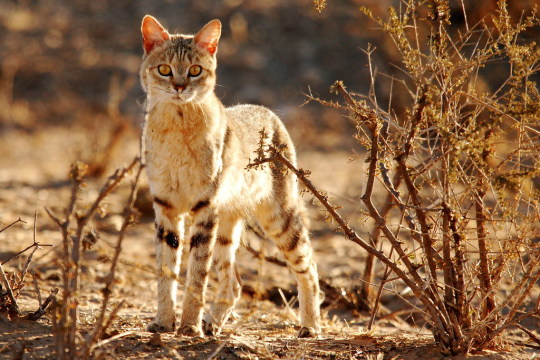
Elegant creature!
#polls#cats#tournament poll#phylogenetic wild cat tournament#domestic cat lineage#chinese mountain cat#african wildcat
60 notes
·
View notes
Note
So you see, Fennel.. [get ready to read this all creator😭😭]
All domestic cats belong to a single species – Felis catus. This is in spite of the great variety of modern cat breeds, from the sleek blue-eyed Siamese and beautifully-spotted Ocicat, to the snub-nosed Persian and the tiny Munchkin. They all belong to the Felidae branch of the animal family tree.
The Felidae is made up of two subfamilies – the Felinae, which includes domestic cats, all the smaller wild cats, and some medium sized beasts such as the Puma, Bobcat, Serval and Cheetah. The other branch of the family, the Pantherinae, contains the big scary ones. We’re talking about Lions, Tigers, Leopards, and Jaguars.
The domestic cat’s wild ancestor is the African Wild Cat, also known as the Near Eastern Cat, (Felis silvestris lybica) – not its very close relative the European Wild Cat (Felis silvestris silvestris). This isn’t just guesswork – the evidence is all there in the cat’s DNA (the genetic coding that makes each species, and each individual within a species, unique). Domestic cats split off from their ancestor around 10,000 years ago. That’s a long history for a family pet!
And in case you start thinking your pet puss is a million miles away from all those lions, tigers and leopards, you may be shocked to hear that kitty shares 95% of her DNA with an African Lion. Not quite as close as humans and Chimpanzees (98.8%), but still very close cousins.
And, when you think about it, cats are just a small pounce away from their wild state, no matter how much they cuddle up and purr in your lap. Hunting and self-sufficiency are second nature to them, as the millions of feral cats around the world show us.
The most appealing theory of how and when cats came to be domesticated goes like this. At the dawn of history, African wildcats made a choice to move in with humans, enjoying the relative warmth and comfort. And all they had to do in return was the thing that comes most naturally to them – hunting down mice and rats.
But there are other theories too…
The general ballpark figure for the widespread domestication of cats is around 10,000 years ago. The rise in their fortunes coincides with the rise of agriculture. As soon as humans were storing grain, the rodents had a field day, and the cats had their work cut out. This theory would place domestication at about 12,000 years ago in the Middle East’s “Fertile Crescent” – the cradle of western agriculture, in a crescent-shaped area of fertile land around Egypt and Syria.
The earliest evidence we have of cats being kept as pets is a 9,500 year-old Neolithic grave in Cyprus containing a man and his feline friend. So, by the time of the cat’s most celebrated early heydays in Ancient Egypt (4,000 years or so ago), they were not exactly newcomers to the domestic hearth. But the Egyptians made a particular fuss of their pets, mummifying them, and worshipping the cat goddess Bastet amongst their vast reservoir of deities.
Domestic cats – all descended from those African Wild Cat ancestors – arrived in Europe with Greek and Phoenician traders about 3,000 years ago. The Romans carried cats in their baggage wherever they marched.
-🌑🐮
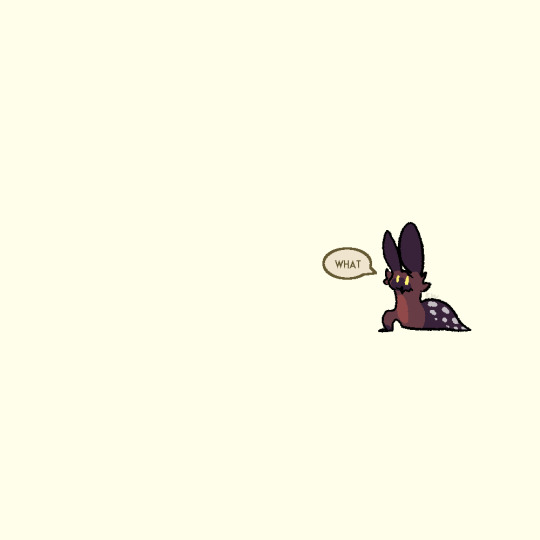
#rw voidlands#rwvl ask#rwvl fennel#OH MY GOD. ANON. THIS IS BEAUTIFUL#im so sorry she doesnt understand a word you said
20 notes
·
View notes
Note
hey mammal, do you happen to know if any other animals brux and boggle, or is that only a rodent behavior?
Boggling is something generally only seen in rats (and to a much lesser extent in mice) because of their anatomy, but other mammals do grind their teeth to communicate! Lagomorphs do it and it serves the same function as a rodent’s bruxing: they do it when they’re relaxed or as a self-soothing behavior when they’re stressed or anxious. Here’s a very relaxed domestic bunny “purring”:
youtube
Bats and certain monkeys (especially macaques) are known to chatter their teeth as well! It seems different species of monkeys do it for different reasons but in bats it’s generally understood as a display of curiosity.
youtube
Barbary macaque (Macaca sylvanus) chattering (starts at 0:13).
youtube
Black crested macaque (Macaca nigra) chattering.
Large flying fox (Pteropus vampyrus) chattering (Sadly the only video I’ve been able to find was a Facebook video so you have to have an account to see it).
And, of course, cats do it! Most domestic cat owners have seen their cats chattering when they see birds or other prey animals but this behavior is seen in wild cats as well, such as the domestic cat’s direct ancestor, the African wildcat (Felis lybica):
21 notes
·
View notes
Text

An African wildcat (Felis lybica) photographed in northern Namibia.
Photo © Will Burrard-Lucas
209 notes
·
View notes
Text
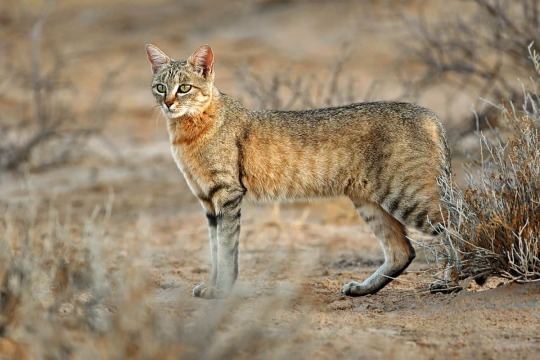
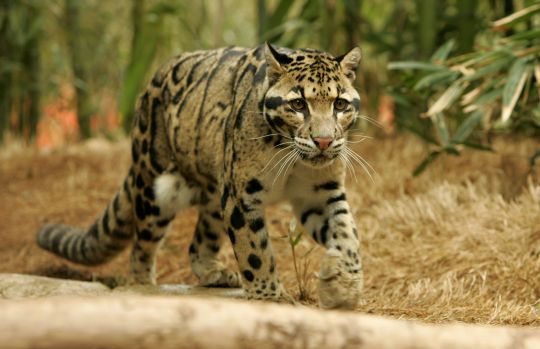
[ID: an image of an African wildcat and a clouded leopard. the African wildcat looks a lot like a housecat, except with longer legs. it's brown with stripes. the clouded leopard is a bigger cat with a longer face, and large spots on its coat. end ID]
31 notes
·
View notes
Photo
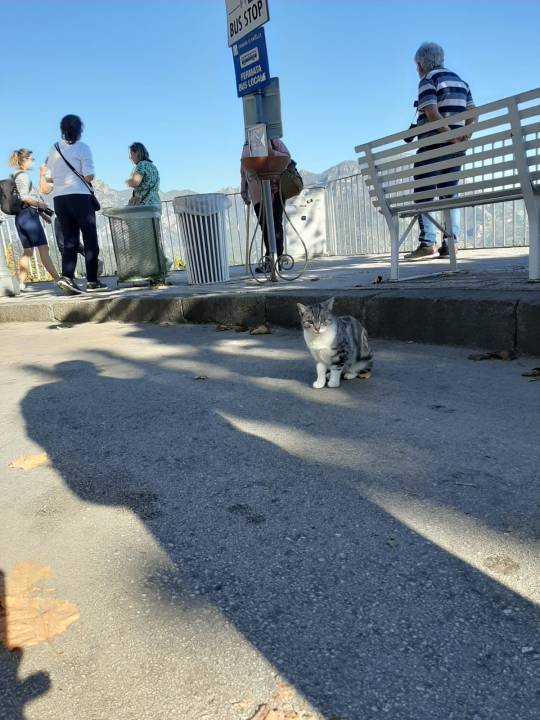



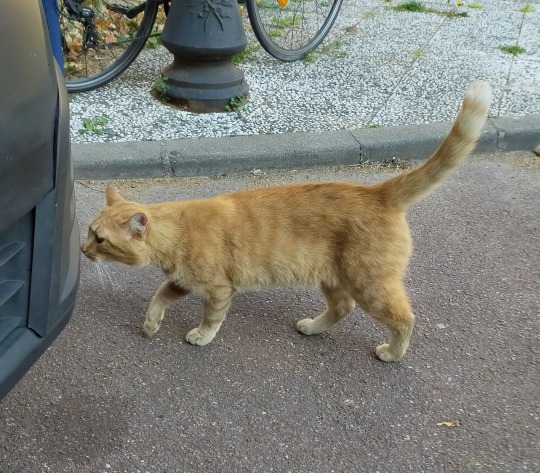



Random cat encounters, in various places
Facts from national geographics: People began to domesticate cats in the Fertile Crescent about 10,000 years ago, according to DNA research. Modern-day cats descended from a subspecies of African wildcat, Felis silvestris lybica, which today is the most common and widespread wildcat.
Thousands of years ago, these wildcats were likely drawn to human settlements and their plentiful mice and food scraps. People realized these rodent catchers were helpful to have around, and eventually the two species began living together. Later, people began to bring felines aboard ships as they traveled the world.
13 notes
·
View notes
Text


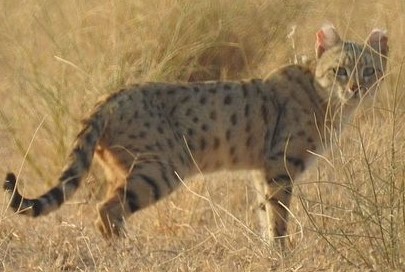
african wildcat (Felis lybica), european wildcat (Felis silvestris), and asiatic wildcat (Felis lybica ornata). one, multiple, or all of these species are thought to be the ancestors of modern domestic cats. all three are interfertile with domestic cats, and interbreeding with feral or free-roaming cats poses a significant threat to their conservation.
photo credit: x | x | x
3 notes
·
View notes
Note
G’mornin Blu! Can you tell me about the cats you’ve hunted? Because in my head “invasive cats” means everything from “we don’t know how these tigers crossed this ocean” to the strange, huge, misshapen feral cats you find in the Middle East…
They're just your run-of-the-mill domestic cat.
WARNING: THIS WILL CONTAIN PICTURES OF CULLED CATS. THAT MEANS THEY'RE DEAD. VIEW AT YOUR OWN DISCRETION.

But they're eating the native wildlife. Australia has some of the most diverse ecosystems in the world. The majority of our native wildlife is endangered or at the least threatened in some way, be it because of climate change, bushfires, deforestation, commercialisation, human development, competition between species for little resources, or invasive species.
The US is going through something similar with their cats too, but it's not as bad as ours and US ecosystems usually aren't so self-contained that even something like 5 individual cats can throw everything into disarray. Australia has a very careful balance.
The issue is that domestic cats are descended from the African wildcat, Felis lybica, and are especially adapted to environments similar to those of much of the Australian bush.
And they're feralising.
This is a wild pig, Sus scrofa, the ancestors of the domestic pig.

This is a domestic pig.

This is a feral pig, after its ancestors have spent a couple hundred years doing what pigs do without human supervision.

See how they're reverting to the state of their more wild ancestors? They're reversing their own domestication to adapt to the environment. It's bloody terrifying. We call it feralising.
In Australia this has taken about 200 years. Our cats have been here just as long, but something's kickstarted them into feralising, and they're doing it fast. Just in the past five years there's been a sudden uptick, and I've been noticing that every cat I shoot seems to be getting bigger.
You're getting stories of cats out there that are 20kg/45lbs. The largest I've killed was almost 14kg, or around 30lbs. They're out-evolving their wild ancestors--the max weight of an African wildcat is 4.5kg or about 10lbs. These cats are losing their domesticated traits and adapting to the bush, and it's happening so fast that the ecosystem is suffering whiplash. A cockatoo can maybe bat off a cat that weighs 5kg at most, but double that? It'd have to rely on speed, and cats are ambush predators, and cockatoos aren't that elegant when they're flying.

You're putting a paddock basher against a fucking Bugatti.
My job is slashing the tyres.
They're 3.8mil domestic cats here. There's 6.3mil FERAL cats. The number of feral cats nearly double the number of domestics. The African wildcat has a lifespan of up to 15 years in the wild because they're adapted to excel in their environment, and the cats are excelling in Australia. TNR is an option in the US and UK since their wildlife typically isn't directly at risk, it's just a matter of cats being overpopulated.
That's not the case for Australia.
It's not just an issue of the cats reproducing, but also just the cats being alive. So long as the cats are alive, they're killing native species whether it's for food or for fun (because cats do that too, it's estimated they only eat THIRTY PERCENT of the animals they kill) and the environment doesn't have the 15 years to wait for the now-sterile cats to cark it.
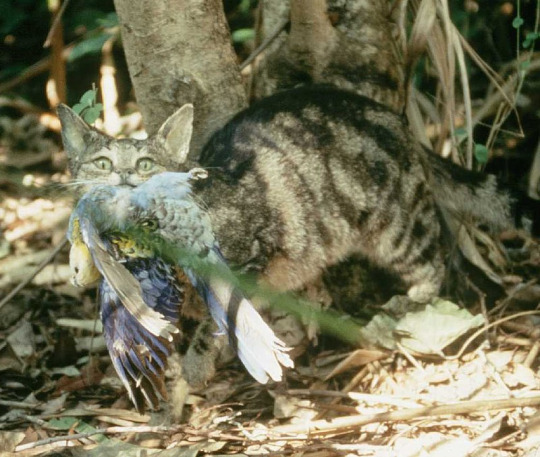
It's dirty work and I don't like it. My family has cats. I like cats.
But I like dogs, and kangaroos, and deer, and I kill those too because I'm paid to do it and it has to be done. Someone has to end up with that blood on their hands, and it may as well be me.
11 notes
·
View notes
Text
Neil Cicierega = wild root species, Toby Fox = feral member of the later domesticated species. As an African wildcat (Felis lybica) is to a feral alleycat (Felis catus).
I'm not sure what the captive domesticated version is. Smosh, maybe? Research is ongoing.
40 notes
·
View notes
Note
Is there just one African wildcat species all domestic cats come from or are there multiple? I know most if not all domestic animals come from just one wild species
technically, the african wildcat is just one of five subspecies of a singular species of wildcat: felis sylvestris. the african subspecies is given the extra suffix lybica. and there is evidence to suggest that these wildcats were domesticated twice in two different times/locations! once in southwest asia approximately ten thousand years ago, and again in egypt much later at around 3500 years. it’s likely that both of these stocks originated from f. sylvestris lybica, as despite its name, this subspecies is found throughout africa, southwest asia, and south asia. so, even after generations of isolation, the two stocks were capable of interbreeding because they were still the same species/subspecies, and thus both of their genetic marks are left on the modern domestic cat population! but, while technically the two populations were of the same species and subspecies, their initial geographic isolation from one another did make them genetically unique from one another and the evidence of this genetic variation is still seen in modern cats! PBS eons has a really good video about the topic, from which i sourced the dates above:
youtube
#theoretically any of the five subspecies could hybridize with each other due to their genetic closeness#so even if the southwest asian population was not f. sylvestris lybica it still would have had no problem#interbreeding with the egyptian population#felidae#felinae#beastposting
7 notes
·
View notes